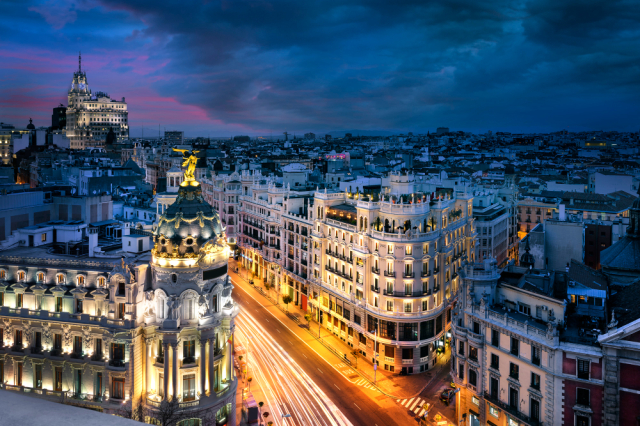Traveling to Spain offers a unique opportunity to explore a country rich in culture, history, and traditions. From big cities to stunning natural landscapes, Spain has something for everyone. Knowing the requirements to visit this country is essential. In addition, choosing the best destinations and experiences will guarantee an unforgettable trip, tailored to each type of traveler.
Requirements for Travel to Spain
Before embarking on a trip to Spain, it is essential to know the entry requirements that each traveler must meet. Adequate documentation, financial accreditation and compliance with health and safety regulations are essential aspects to ensure a smooth arrival.
Necessary Documentation
Documentation is crucial for any traveler wishing to enter Spain. Requirements vary depending on the nationality of each individual.
Citizens of the European Union
- Citizens of the European Union, Switzerland, Norway, Iceland and Liechtenstein can enter Spain with their National Identity Document (DNI) or a valid passport.
- Minors travelling with an ID card will need appropriate parental permission.
Citizens from outside the European Union
- Travellers from non-EU countries must present a valid passport, which must be recognised by international conventions, and must be valid for at least three months after the intended date of departure.
- In addition, they must have a valid visa if their nationality requires it, in accordance with Spanish regulations.
Economic Accreditation
It is essential to prove that you have sufficient financial means to cover your expenses during your stay in Spain. This requirement helps to ensure that travelers will be able to support their trip and return to their country of origin without problems.
Sufficient Financial Means
- Travelers may be asked to present supporting documentation, such as bank statements, credit cards or any other type of proof that demonstrates their financial capacity.
- It is advisable to carry a sufficient amount of cash or means of payment in case it is necessary to demonstrate financial solvency at immigration checkpoints.
Health and Safety Regulations
Another essential aspect to consider is health and safety regulations. Spain is concerned about public health, and therefore requires travelers to meet certain conditions before entering.
Public Health Risks
- Entry will not be permitted to persons who pose a risk to public health, public order or national security.
- Travelers are advised to be aware of any health warnings or vaccination requirements that may apply to their specific situation.
Travel Insurance
- Having travel insurance that covers possible eventualities is also considered a good practice, as it provides greater peace of mind during your stay.
- Adequate insurance can provide protection in the event of illness, accidents or lost luggage.
Best Destinations in Spain
Spain is home to a diverse range of destinations that combine history, culture, nature and leisure. From bustling cities to charming villages, every corner offers unique experiences that dazzle. Below are some of the best places to explore in this fascinating country.
Must-See Urban Destinations
Madrid
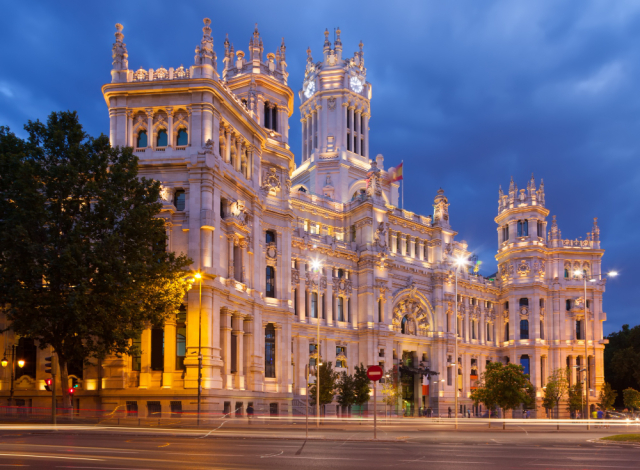
The vibrant capital, Madrid, is known for its rich cultural and artistic life. Landmarks such as the Museo del Prado, where you can see masterpieces by artists such as Velázquez and Goya, are just the beginning. The Retiro Park, with its beautiful gardens and ponds, offers a green respite from the urban bustle. Another landmark is the Royal Palace, which combines history and architectural splendour. Madrid's gastronomy, characterised by tapas and the famous calamari sandwich, leaves no one indifferent.
Barcelona
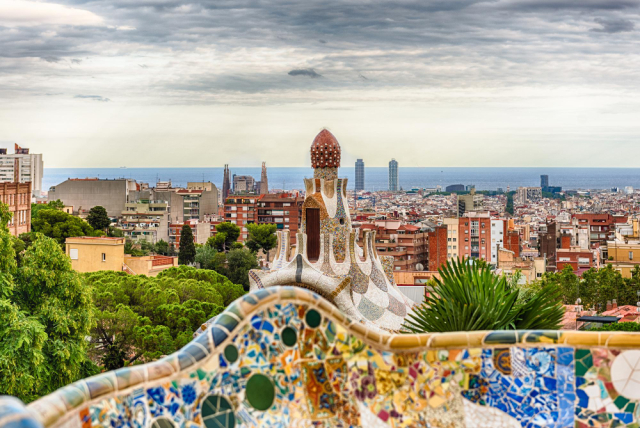
Barcelona is famous for its unmistakable modernist architecture, especially the Sagrada Familia, a monumental work by Antoni Gaudí. Las Ramblas, one of the best-known streets, is ideal for strolling, enjoying local life and tasting typical dishes in its many restaurants. The Gràcia and Gothic quarters are also worth a visit, showing the mix of traditions and modernity. Barcelona combines beach and culture, making it a perfect destination all year round.
Coastal Destinations
Balearic Islands
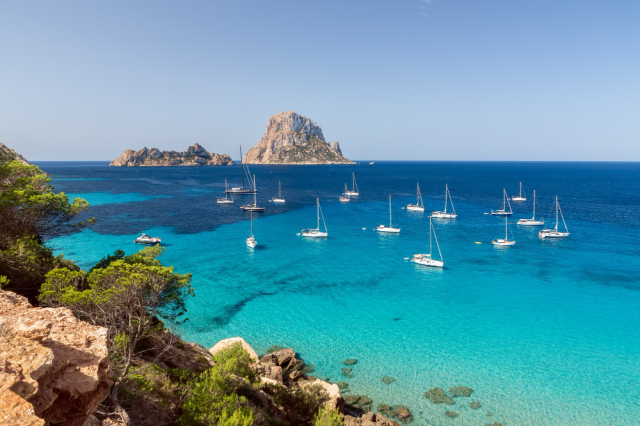
The Balearic Islands are a paradise for sun and sea lovers. Mallorca, Ibiza and Menorca offer crystal-clear beaches and dreamlike landscapes. Mallorca is known for its stunning coastline and mountains, while Ibiza attracts those seeking nightlife. The quieter Menorca is characterised by its natural beauty and unspoilt beaches. The Balearic Islands offer options for both relaxation and outdoor adventure.
Canary Islands
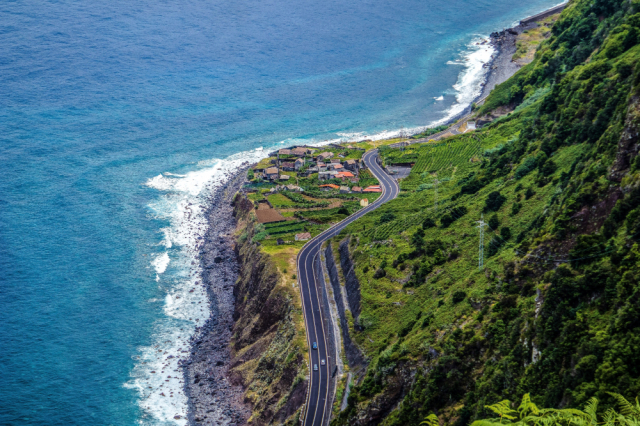
The Canary Islands, an archipelago located in the Atlantic Ocean, are ideal for enjoying pleasant temperatures all year round. Tenerife, Gran Canaria and Lanzarote are some of the most visited islands. Tenerife is home to Mount Teide, the highest peak in Spain, which invites you to go on hiking trails. Gran Canaria offers a diverse landscape, from golden beaches to mountains. Lanzarote stands out for its volcanic landscapes, unique in the world.
Rural and Nature Getaways
Galicia
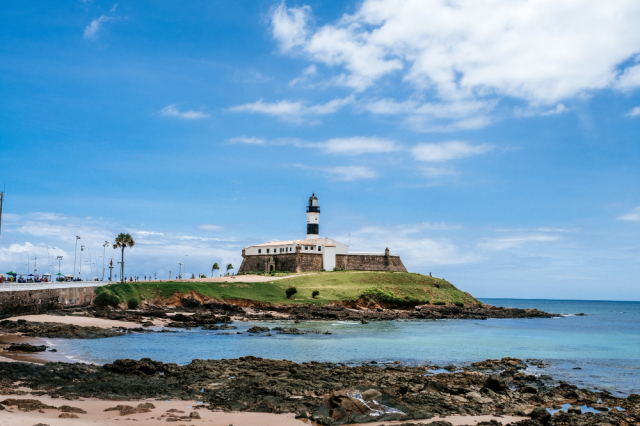
Galicia is known for its spectacular green landscapes and rich culture. The Camino de Santiago attracts pilgrims and hikers from all over the world. The Galician coast, with its impressive cliffs and beaches, is ideal for nature lovers. In addition, the local gastronomy, highlighting fresh seafood and Galician empanada, contributes to the experience of visiting this region. Cities such as Santiago de Compostela and A Coruña offer significant cultural appeal.
Peaks of Europe
The Picos de Europa represent a stunning mountain destination in northern Spain. This national park is perfect for hiking and outdoor activities. The rugged landscapes and natural balconies allow for spectacular views. The Cares route is especially popular among hikers. The varied climate and the exuberance of flora and fauna make this region an ideal place for nature and adventure lovers.
Travel to Spain on a Budget
Exploring Spain doesn't have to be a burden on your budget. There are plenty of options that allow you to enjoy the wonders of the country without spending a fortune.
Affordable Accommodation Options
One of the main concerns when travelling is often accommodation. However, Spain offers a wide range of affordable options for all budgets.
- Hostels and Youth Hostels: These are perfect for those looking to save money. They usually offer beds in shared rooms at very affordable prices, as well as the possibility of socializing with other travelers.
- Budget Hotels: There are hotel chains that offer affordable rates and guarantee comfort. They are mainly located in urban areas and near tourist spots.
- Airbnb and Vacation Rentals: Renting an apartment or room in a local's home can be cheaper, especially for longer stays. This option also allows for cooking, which can cut down on food costs.
- Camping: For nature lovers, camping is a convenient and economical option. In various regions, it is possible to enjoy suitable facilities in a natural setting.
Tips to save on transportation
Getting around Spain economically requires good planning. Here are some strategies to optimize your transportation spending.
- Train Tickets: Using the high-speed train may seem expensive, but booking in advance can provide very competitive fares. The youth and senior discount card can be useful.
- Regional Buses: Buses are usually cheaper than trains and connect almost all cities and towns. It is recommended to check timetables and prices at stations.
- Public Transport: In larger cities, using public transport such as the metro or city buses is a practical and affordable option. In addition, many cities have passes that allow multiple trips at a good price.
- Walking: Many Spanish cities are ideal for exploring on foot. Walking through historic neighborhoods not only saves money, but also allows you to discover hidden places.
Free or Low Cost Activities
There are countless activities to enjoy in Spain without spending a lot of money.
- Museum Visits: Many museums have specific days or times when admission is free. Learning about these opportunities can be a great way to enjoy art and culture for free.
- Walks in Parks: Parks are ideal places to spend a pleasant time. Places like the Retiro Park in Madrid or the Ciudadela Park in Barcelona are perfect for relaxing and enjoying the outdoors.
- Cultural Festivals: Attending local fiestas and festivals can be a great way to experience Spanish culture up close. Many celebrations are free and offer a variety of activities, great music and food.
- Hiking Trails: Spain has a vast network of trails that allow you to enjoy nature at no cost. Many of these routes offer spectacular views and the opportunity to connect with the natural environment.
Unique Experiences and Spanish Gastronomy
Spain's cultural richness is reflected not only in its monuments and landscapes, but also in its exquisite gastronomy. Culinary experiences are an essential part of any trip to this vibrant country.
Regional Gastronomy
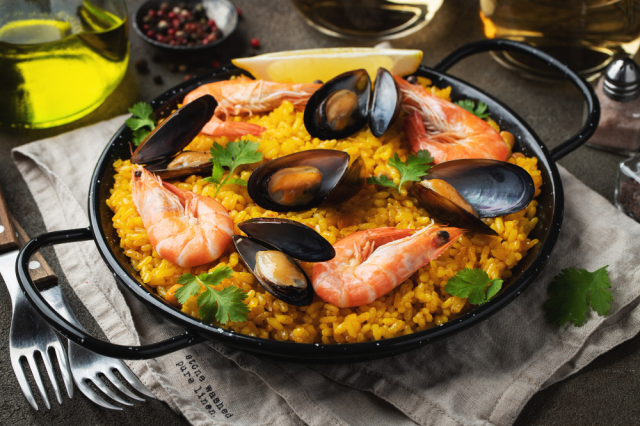
Gastronomy in Spain is a journey through its various regions, each with its own flavour and tradition. From iconic dishes to renowned wines, the offer is wide and varied.
Traditional dishes
- Paella: Originally from Valencia, this famous rice dish is made with seafood, meat or vegetables and is a symbol of Spanish cuisine. Each region has its own variation, which makes it even more special.
- Tapas: A classic in Spanish food culture, tapas are appetizers served in small portions. From patatas bravas to Iberian ham, these delicacies are ideal for sharing and enjoying in good company.
- Gazpacho: This cold soup, made primarily with tomatoes, peppers and cucumbers, is perfect for cooling off during the hot summer months. It is a typical dish from Andalusia.
- Churros: A favourite for breakfast or a snack, churros are fried pastries that are usually accompanied by hot chocolate, being a typical sweet in many Spanish cities.
- Bull's tail: This traditional stew, especially popular in Córdoba, has its roots in Andalusian cuisine. It is prepared with bull's tail (or cow's tail), slowly cooked with red wine, vegetables and spices, until obtaining a tender meat that melts in the mouth. It is a dish full of flavour and history, long linked to the celebration of bullfights.
- Spanish Omelette: Also known as Spanish potato omelette, this is one of the most iconic dishes in Spanish cuisine. Made with eggs, potatoes and, often, onion, its simplicity and flavour have made it a classic that can be enjoyed either hot or cold.
- Pulpo a la Gallega: Originally from Galicia, this dish consists of cooked octopus served on a bed of potatoes, sprinkled with paprika, coarse salt and a good splash of olive oil. It is a perfect example of the seafood cuisine of northern Spain.
- Cocido Madrileño: This hearty stew typical of Madrid is prepared with chickpeas, meats (chorizo, blood sausage, beef and pork) and vegetables. It is traditionally served in three courses: soup, chickpeas and vegetables, and finally the meats.
- Fabada Asturiana: This powerful spoon dish comes from Asturias, made with fabes (white beans) and compango, a combination of smoked sausages such as chorizo, blood sausage and ham. It is ideal for the cold months.
- Pisto Manchego: A humble and delicious dish, originally from Castilla-La Mancha, consisting of a stew of vegetables such as tomato, pepper, zucchini and onion. It is usually accompanied with a fried egg or crispy bread.
- Calamares a la Romana: Very popular on the coasts and in cities like Madrid, calamares a la romana are battered and fried squid rings, served with lemon. They are an essential appetizer in bars and terraces.
- Roasted Lamb: Typical of Castile and Leon, this suckling lamb is slowly roasted in a wood-fired oven, resulting in tender and juicy meat with crispy skin. It is a traditional dish for celebrations and family gatherings.
- Crema Catalana: One of the most traditional desserts in Catalonia, similar to crème brûlée, it is made with a pastry cream made from egg yolk, milk and sugar, topped with a thin layer of caramelized sugar.
Wines and typical drinks
- Rioja Wine: This appellation of origin is world famous for its red wines, made mainly from the Tempranillo grape. Each tasting reveals the richness of the region's terroirs.
- Sangria: A refreshing drink that mixes red wine, fruit and a touch of soda. Ideal to enjoy on a terrace, it has become a symbol of Spanish social life.
- Vermouth: Consumed primarily as an aperitif, vermouth is an aromatized wine served chilled with a slice of lemon or orange. Its popularity has grown in recent years, becoming a trend in bars.
Festivals and Cultural Events
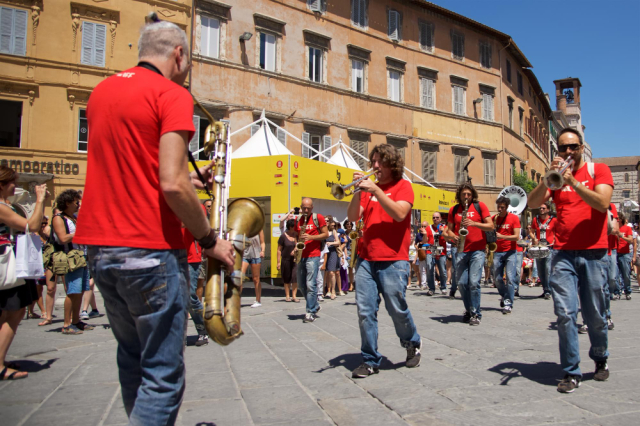
Celebrating culture and traditions is an integral part of life in Spain. Numerous festivals throughout the year offer a glimpse into local traditions and gastronomy.
- La Tomatina: Held in Buñol, this tomato throwing festival attracts thousands of participants every August and is a fun and unique experience.
- April Fair: In Seville, this festival, which takes place in spring, is famous for its festive atmosphere, with stalls, music, dancing and typical food.
- San Fermin Festival: The running of the bulls in Pamplona is known throughout the world and marks the beginning of a week of celebrations in honor of San Fermin.
Recommended Gastronomic Routes
Exploring Spain through its gastronomic routes is a unique experience that allows you to enjoy local flavours in all their splendour.
- La Rioja Wine Route: This tour covers the region's most emblematic wineries, with the possibility of wine tastings and regional tapas samplings.
- Camino de Santiago: Pilgrims not only enjoy spiritual routes, but can also sample rich cuisine at each stop, including dishes such as Galician octopus and fresh seafood.
- Granada Tapas Route: This itinerary allows you to experience the tradition of free tapas with every drink, offering a variety of flavours at each bar.
General Transportation Information
Spain's transport infrastructure is modern and varied, making it easy for both tourists and residents to get around. Below are the different options available for getting around the country.
Air Transport and Connections
Spain has an extensive network of airports that connect it to international and national destinations. Adolfo Suárez Madrid-Barajas Airport is the largest and busiest, offering flights to virtually all European capitals and many cities in America, Asia and Africa.
Barcelona-El Prat, Malaga-Costa del Sol and Valencia airports are also key for air traffic, providing easy access to popular coastal areas. Major airlines offer competitive fares, and it is advisable to book in advance to get the best prices.
Domestic flight connections allow travellers to move quickly between the various autonomous communities. In this way, the long journey times by road or train can be avoided in some cases.
Railway System
Spain's railway system is one of the most advanced in Europe, notable for its efficiency and speed. Renfe, the national railway company, operates both high-speed trains (AVE) and regional and local services.
AVE trains connect major cities quickly, such as Madrid, Barcelona, Seville and Valencia, with journeys that are often more comfortable and efficient than travelling by car. Prices vary depending on how far in advance you buy and the class you choose, but are usually competitive.
There are also medium-distance trains that allow access to smaller towns, facilitating connections with different regions. It is advisable to purchase tickets in advance, especially during the high tourist season.
Bus and Road Networks
Bus transport is an excellent option for those who wish to explore corners that are less accessible than by train. Companies such as ALSA and Avanza offer regular services throughout the country, including trips to small towns and villages that are not connected by train.
Spanish roads are generally of good quality, and the network of motorways (A) and national roads (N) allows for smooth traffic flow. It is common for travellers to choose to rent a car for greater flexibility, especially in rural areas or less accessible tourist destinations.
- Right-hand driving.
- A valid driver's license is required.
- Speed limits are: 120 km/h on motorways, 90 km/h on national roads and 50 km/h in urban areas.
Bus stops are usually well signposted, and schedules are generally punctual. For those who prefer to travel at their own pace, there are numerous car and van rental companies.
Practical Tips for Travel
When planning a trip to Spain, it is essential to keep in mind some practical tips that guarantee a more comfortable and enjoyable experience. From climatic aspects to safety measures and available services, these details are key to enjoying the trip to the fullest.
Climate and Best Time to Visit
Spain has a wide range of climates, which influences the best time to visit. In general, the climate is Mediterranean, characterized by hot summers and mild winters. Temperatures vary significantly depending on the region.
- Spring (March-June): This season is ideal for visiting, as temperatures are pleasant and landscapes are in full bloom. It is a popular time for tourism, especially in cities like Madrid and Barcelona.
- Summer (June-September): The summer months can be very hot, especially in southern Spain. However, it is the best time to enjoy the beaches and local festivals.
- Fall (September-November): Similar to spring, fall offers pleasant temperatures and fewer crowds at major tourist destinations. It's a great time to explore local cuisine.
- Winter (December-February): Although temperatures can drop, many cities have a special charm during this season. Christmas festivities are notable and some regions, such as the Pyrenees, offer skiing activities.
Safety and Precautions
Spain is considered one of the safest countries in Europe, but as in any tourist destination, it is recommended to take certain precautions to avoid inconveniences.
- Be aware of your belongings: Despite being a safe country, petty theft can occur, especially in crowded places such as markets and train stations.
- Avoid dangerous areas: It is advisable to be aware of areas that may not be safe, especially at night. Staying in well-lit and busy areas minimizes risks.
- Knowing the emergency numbers: Having the emergency number, which in Spain is 112, at hand is vital in case of any unforeseen event. Familiarizing yourself with local medical services is also very useful.
Services Available for Tourists
Spain has a wide range of services that facilitate the travel experience, aimed at helping tourists in their exploration.
- Tourist offices: Present in the main cities and regions, they offer valuable information about attractions, routes and events. These offices usually have maps and trained staff to answer questions.
- Connectivity: Most Spanish cities have good internet connections. Many places offer free Wi-Fi, allowing you to stay connected and plan on the go.
- Efficient public transport: Transport systems such as the metro, bus and tram are cheap and functional. They allow you to easily get around and explore different parts of cities.
- Multilingual assistance: In tourist areas, staff at many establishments speak multiple languages, helping visitors feel more comfortable and safe.
